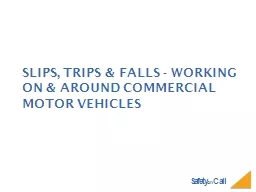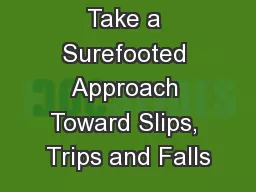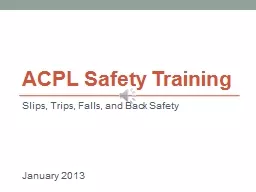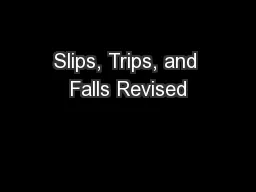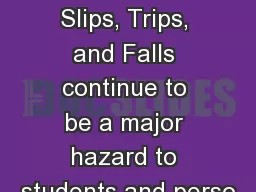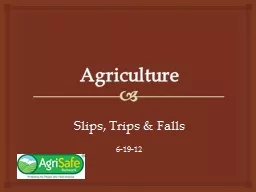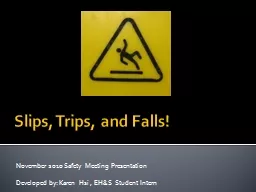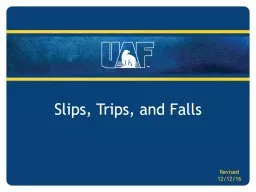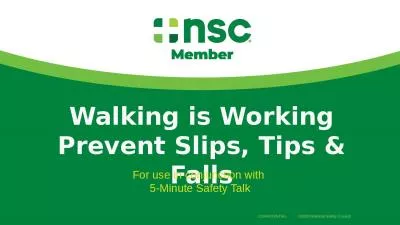PPT-Slips, trips & falls - working on & around commerci
Author : olivia-moreira | Published Date : 2016-09-16
REDUCING SLIPS TRIPS amp FALLS Inspect steps to ensure that there are no defects before climbing on A quick visual check should be completed during the pretrip inspection
Presentation Embed Code
Download Presentation
Download Presentation The PPT/PDF document "Slips, trips & falls - working on &a..." is the property of its rightful owner. Permission is granted to download and print the materials on this website for personal, non-commercial use only, and to display it on your personal computer provided you do not modify the materials and that you retain all copyright notices contained in the materials. By downloading content from our website, you accept the terms of this agreement.
Slips, trips & falls - working on & around commerci: Transcript
Download Rules Of Document
"Slips, trips & falls - working on & around commerci"The content belongs to its owner. You may download and print it for personal use, without modification, and keep all copyright notices. By downloading, you agree to these terms.
Related Documents

